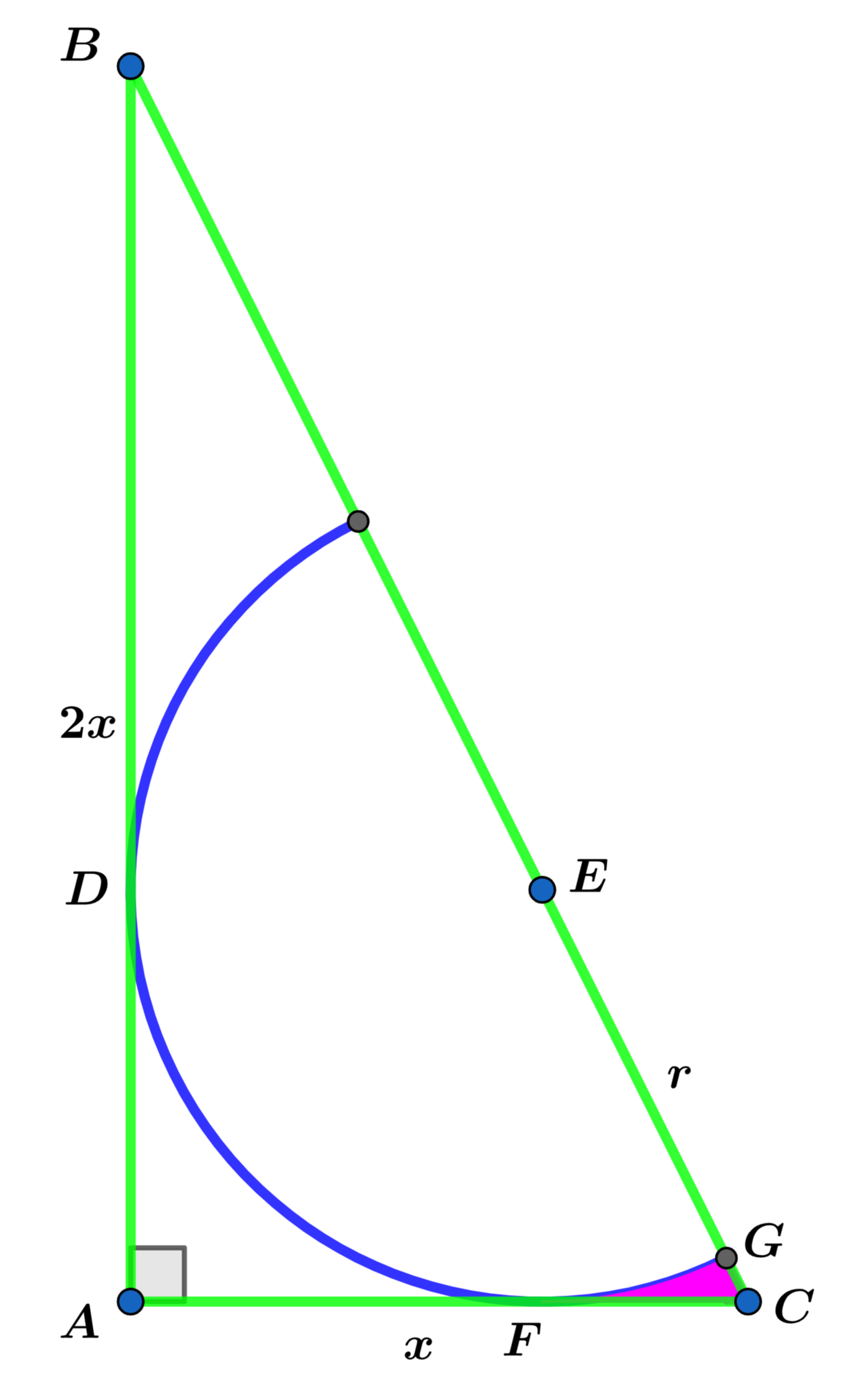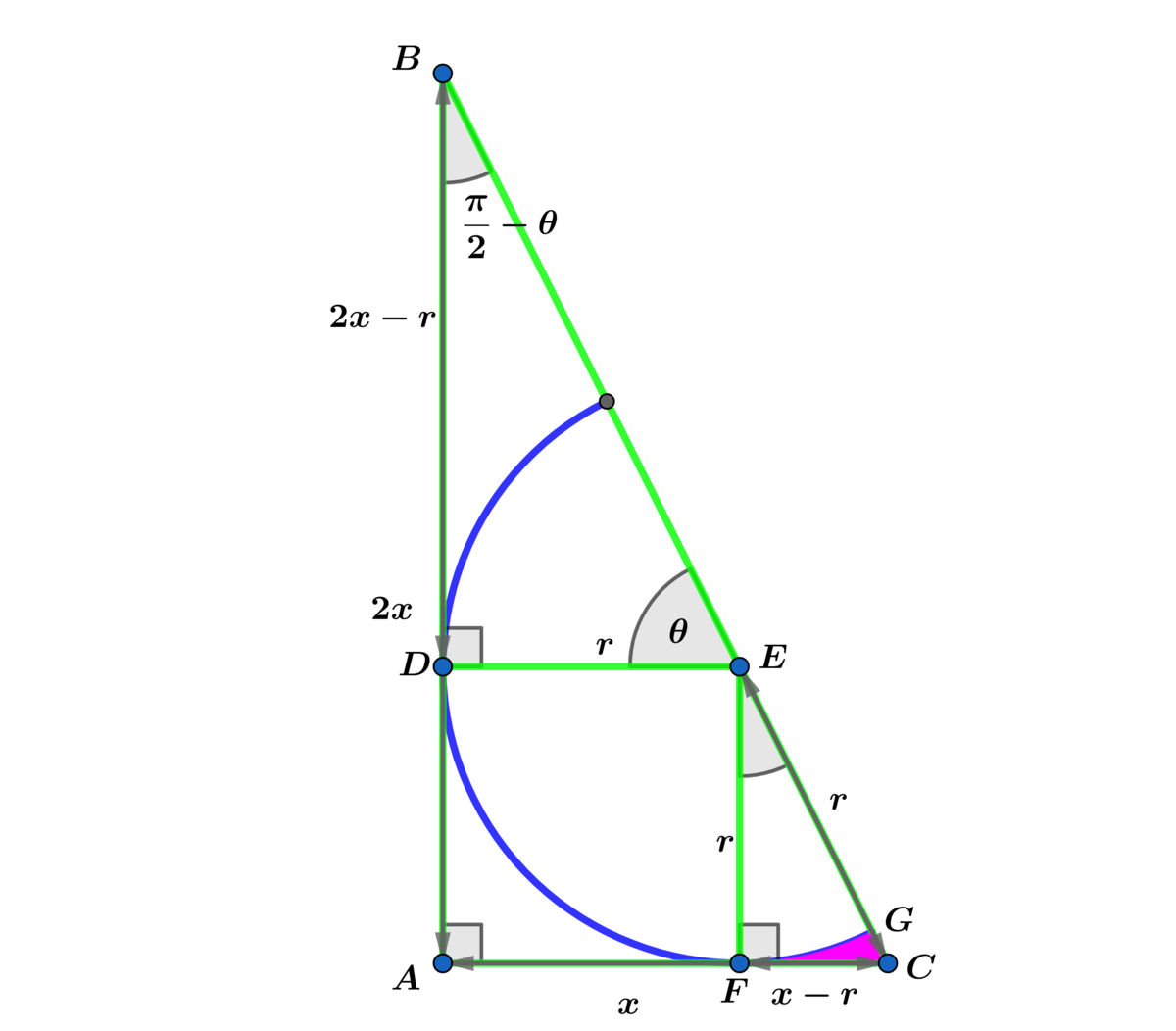Semicircle in a Right Triangle!

In a right △ A B C , the inscribed semicircle is centered at E with radius r and tangent to A B at D and A C at F and A C = x and A B = 2 x .
Let A p be the area of the pink region. Then r 2 A p = β β α ( β arctan ( β ) − ( π − α ) ) , where α and β are coprime positive integers. Find α + β .
The answer is 3.
This section requires Javascript.
You are seeing this because something didn't load right. We suggest you, (a) try
refreshing the page, (b) enabling javascript if it is disabled on your browser and,
finally, (c)
loading the
non-javascript version of this page
. We're sorry about the hassle.
3 solutions
Let A be at A ( 0 , 0 ) and let the radius of the semi-circle be r = 1 .
Then F is at F ( 1 , 0 ) and E is at E ( 1 , 1 ) , and since the slope of the hypotenuse is − 2 , it has an equation of y = − 2 ( x − 1 ) + 1 , which intersects C at C ( 2 3 , 0 ) .
Then the area of △ E F C is A △ E F C = 2 1 ⋅ 2 1 ⋅ 1 = 4 1 , and the area of the sector of the A E F C = 2 π 2 π − arctan ( 2 ) ⋅ π ⋅ 1 2 = 4 π − 2 arctan ( 2 ) .
Therefore, A p = A △ E F C − A E F C = 4 1 − ( 4 π − 2 arctan ( 2 ) ) = 2 2 1 ( 2 arctan ( 2 ) − ( π − 1 ) ) , so that α = 1 , β = 2 and α + β = 3 .

△ B D E ∼ △ E F C ⟹ r x − r = 2 x − r r ⟹ 2 x 2 − 3 x r + r 2 = r 2 ⟹
x ( 2 x − 3 r ) = 0 and x = 0 ⟹ x = 2 3 r ⟹ x − r = 2 r ⟹ A △ F E C = 4 r 2
and tan ( θ ) = 2 ⟹ A s e c t o r ( E F G ) = 2 1 ( 2 π − arctan ( 2 ) ) r 2 ⟹
A p = A △ F E C − A s e c t o r ( E F G ) = 4 1 ( 2 arctan ( 2 ) − ( π − 1 ) ) r 2 ⟹
r 2 A p = 4 1 ( 2 arctan ( 2 ) − ( π − 1 ) ) = β β α ( β arctan ( β ) − ( π − α ) )
⟹ α + β = 3 .
We note that △ C E F and △ A B C are similar. Since E F = r , then F C = 2 1 r . Let ∠ E F C = θ , then
A p r 2 A p = [ C E F ] − 2 θ r 2 = 2 1 ⋅ r ⋅ 2 r − 2 θ r 2 = 4 1 − 2 θ = 4 1 ( 1 − 2 tan − 1 2 1 ) = 4 1 ( 1 − 2 ⋅ 2 π + 2 tan − 1 2 ) = 4 1 ( 2 tan − 1 2 − ( π − 1 ) ) where [ C E F ] denotes the area of △ C E F
Therefore α + β = 1 + 2 = 3 .